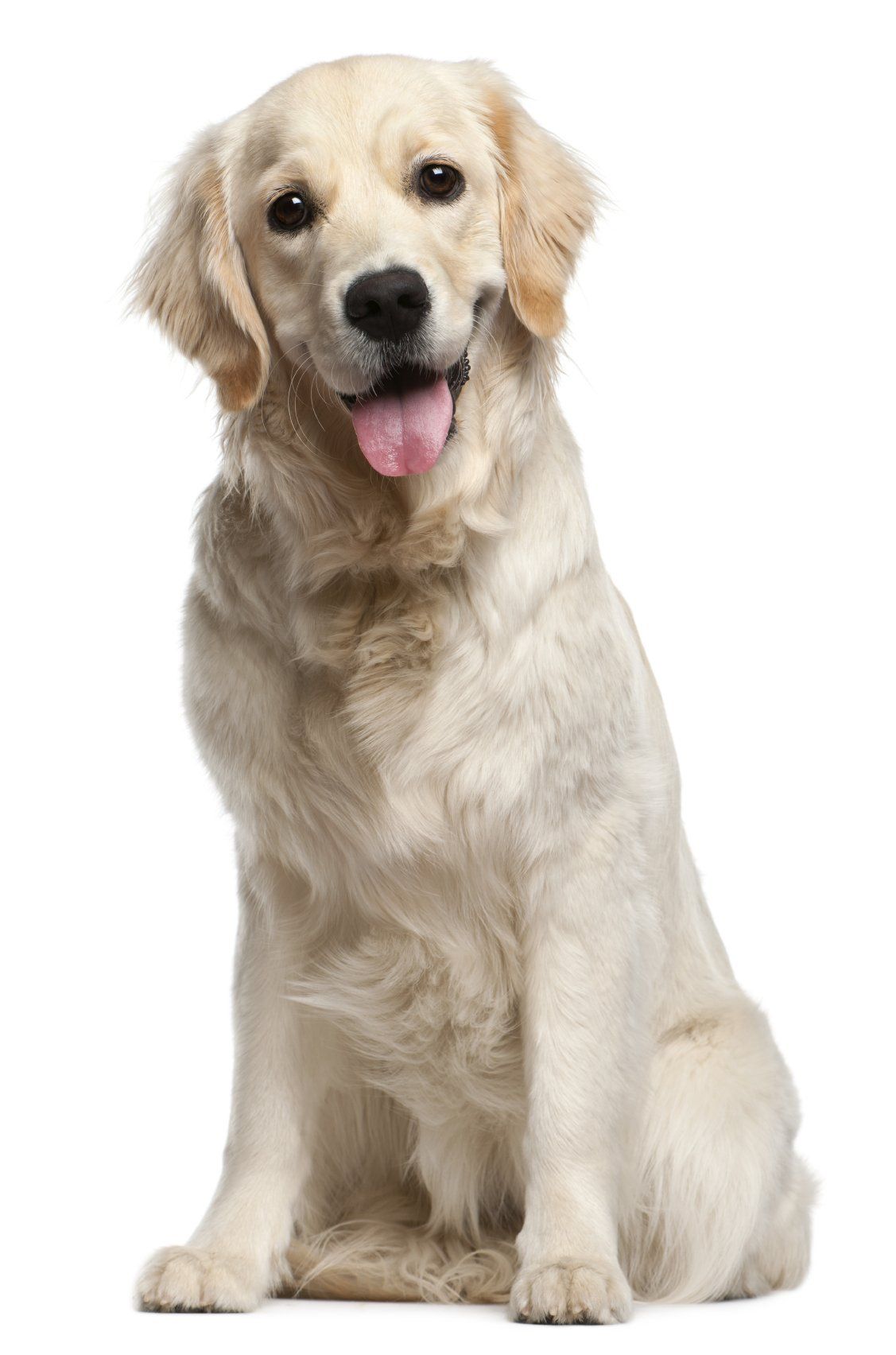Health info sheet
Rupture of the anterior cruciate ligament
The anterior cruciate ligament (ACL) is a ligament in the knee that provides stability to the joint. It avoids the abnormal advance of the tibia during support. It crosses the posterior cruciate ligament which prevents the recoil of the tibia during support. Their respective position explains their name: the cruciate ligaments.
Rupture of the anterior cruciate ligament is the leading cause of hind limb lameness in dogs. Most of these ruptures (80%) are of degenerative origin, ie they follow a disease of the ligament itself.
The diseased ligament weakens over time and eventually breaks, partially or totally. There are certain predisposing factors such as age, race, weight, anatomical conformation or genetic factors. Certain breeds of dogs are more often represented, such as the Labrador, the Rottweiller, the Boxer or the West-Highland White Terrier.
Overweight animals are more prone to anterior cruciate ligament tears because the joints have to bear a greater load than they are designed for.
The shape of the bones (tibia and femur) could also favor the appearance of this pathology.
Clinical signs:
Lameness is sudden, acute, severe onset with loss of support during rupture of traumatic origin, most often after exertion.
Lameness is insidious, progressive, more marked after rest or effort during partial rupture. Often the owner also notices fatigue but does not detect any real lameness.
In general, the dog shows a reluctance to sit down, he no longer fully bends the affected knee and carries the limb to the side when he sits down. Both knees can be affected at the same time, so the pathology can lead to the inability to get up. Given the degenerative nature of this pathology, 50% of dogs seen in consultation for a ruptured anterior cruciate ligament break the cruciate ligament on the opposite side in the following year.
Lameness is sudden, acute, severe onset with loss of support during rupture of traumatic origin, most often after exertion.
Lameness is insidious, progressive, more marked after rest or effort during partial rupture. Often the owner also notices fatigue but does not detect any real lameness.
In general, the dog shows a reluctance to sit down, he no longer fully bends the affected knee and carries the limb to the side when he sits down. Both knees can be affected at the same time, so the pathology can lead to the inability to get up. Given the degenerative nature of this pathology, 50% of dogs seen in consultation for a ruptured anterior cruciate ligament break the cruciate ligament on the opposite side in the following year.
Preferred surgical treatment:
The gold standard for treating anterior cruciate ligament tear in dogs is surgery. The cruciate ligament is fundamental for the stability of the knee and it is therefore necessary to ensure its substitution in the event of a rupture.
Medical treatments (anti-inflammatories) can provide temporary relief but cannot limit the onset of osteoarthritis. Limiting activity relieves the knee. The fight against overweight optimizes patient comfort. Hydrotherapy is beneficial and provides relief to the patient in the absence of a meniscal lesion. This physiotherapy technique facilitates the development of muscle masses and thus strengthens the stability of the knee.
The gold standard for treating anterior cruciate ligament tear in dogs is surgery. The cruciate ligament is fundamental for the stability of the knee and it is therefore necessary to ensure its substitution in the event of a rupture.
Medical treatments (anti-inflammatories) can provide temporary relief but cannot limit the onset of osteoarthritis. Limiting activity relieves the knee. The fight against overweight optimizes patient comfort. Hydrotherapy is beneficial and provides relief to the patient in the absence of a meniscal lesion. This physiotherapy technique facilitates the development of muscle masses and thus strengthens the stability of the knee.
Prosthetic treatment:
Extra-articular technique:
- Flo technique: this technique is generally used on small dogs or cats. Placement of a lateral prosthesis, which has the same orientation as the old cruciate ligament. It consists of a loop which rests on the lateral sesamoid bone of the gastrocnemius muscle and in a drilling made in the tibial crest.
- Tightrope technique
Intra-articular technique:
the prosthesis used is placed in the joint to replace the original cruciate ligament.
Osteotomy treatment:
Osteotomy treatment:
- The TPLO (Tibial Plateau Leveling Osteotomy = tibial plateau leveling osteotomy): The proximal part of the tibia is cut in a circular fashion and tilted backwards to bring the tibial slope close to the horizontal. The “fracture” thus created is then stabilized by a plate and screws.
- The ATT (Tuberosity Tibial Advancement) or TTO (Tuberosity Tibial Osteotomy) are variants of the TPLO.
Complications:
The complication rate is relatively low. The main complications are infections and mechanical complications. Infections are most often treated with antibiotics, but in some cases surgery is required. Mechanical complications generally occur when the animal has too much physical activity before complete healing. Most of these problems are solved with a rest period, but sometimes it is necessary to resort to a new surgical intervention.
Post operative:
It is advisable to confine your animal to a single room or a cage for smaller sizes, until the wires are removed. Only hygienic outings, 5 minutes, 3 to 4 times a day, on a short leash and on flat ground are authorized. The resumption of physical activity will be discussed at the time of the control visit.
Physiotherapy or physiotherapy
improves your pet's functional recovery after surgery. The pain associated with the rupture of the cruciate ligament and its surgical stabilization leads to lameness and amyotrophy of the affected limb.
It is important to avoid too much muscle wasting and to maintain the correct range of motion. Various exercises can be proposed and adapted according to their abilities and level of disability. Cryotherapy, mechanotherapy, walking on an underwater treadmill, shock waves are all available options which should be discussed with your veterinarian during the follow-up of your companion.
Osteoarthritis progression is inevitable after a cruciate ligament rupture. Surgical stabilization can reduce its progression. Various hygienic adaptations are available to improve your pet's comfort and protect their joints.
Weight control: it is important to monitor your pet's weight and ensure that it is not overweight. Being overweight aggravates the formation of osteoarthritis and reduces your pet's mobility.
Exercise: it is important to maintain a physical activity (walking, games, sports, etc.) which should be adapted according to your pet's abilities. Be careful, however, not to go overboard, which could lead to fatigue and harmful rather than beneficial effects.
Feed: there are foods designed specifically for joint preservation.
Osteoarthritis progression is inevitable after a cruciate ligament rupture. Surgical stabilization can reduce its progression. Various hygienic adaptations are available to improve your pet's comfort and protect their joints.
Weight control: it is important to monitor your pet's weight and ensure that it is not overweight. Being overweight aggravates the formation of osteoarthritis and reduces your pet's mobility.
Exercise: it is important to maintain a physical activity (walking, games, sports, etc.) which should be adapted according to your pet's abilities. Be careful, however, not to go overboard, which could lead to fatigue and harmful rather than beneficial effects.
Feed: there are foods designed specifically for joint preservation.
Food supplements:
various complementary products are available from your veterinarian to improve your animal's recovery or comfort (omega 3, chondroitin sulphate, chondroprotectors).




